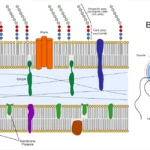What patterns, trends, and discrepancies led Morgan to question Mendel’s principles and identify non-Mendelian inheritance?
What patterns, trends, and discrepancies led Morgan to question Mendel’s principles and identify non-Mendelian inheritance?
Answered
Thomas Hunt Morgan’s investigations into inheritance patterns, particularly through his studies of Drosophila melanogaster (fruit flies), led him to question Mendel’s principles and identify non-Mendelian inheritance due to several key observations and discrepancies:
1. Sex-Linked Traits
Morgan discovered that certain traits, such as eye color in fruit flies, did not follow Mendelian inheritance patterns. For example, when he crossed a white-eyed male with a red-eyed female, the F1 generation exhibited all red eyes. However, in the F2 generation, he observed a 3:1 ratio of red to white eyes, but importantly, all white-eyed flies were male. This indicated that the white-eye trait was linked to the X chromosome, demonstrating that inheritance could differ between sexes, which contradicted Mendel’s assumption of equal segregation for all traits across genders.
2. Linkage and Non-Mendelian Ratios
Morgan’s work revealed that genes located close together on the same chromosome tend to be inherited together (linkage), leading to deviations from the expected Mendelian ratios. For instance, in dihybrid crosses involving linked genes, the expected 9:3:3:1 phenotypic ratio was often not observed. Instead, Morgan found that certain combinations of traits appeared more frequently than others due to linkage, challenging Mendel’s law of independent assortment.
3. Reevaluation of Mendelian Principles
Morgan initially approached genetics with skepticism towards Mendelian principles. He noted that while Mendel’s laws provided a framework for understanding inheritance, they did not account for all observed genetic phenomena. For example, traits sometimes exhibited incomplete dominance or codominance, resulting in phenotypes that did not fit Mendel’s strict dominant-recessive model. This prompted Morgan to explore the chromosomal basis of inheritance further.
4. Experimental Evidence and Chromosomal Theory
Morgan’s experiments provided strong support for the chromosomal theory of inheritance proposed by Boveri and Sutton. He demonstrated that genes are located on chromosomes and that their behavior during meiosis can explain Mendelian inheritance patterns. However, his findings regarding sex linkage and gene linkage suggested modifications to these principles, highlighting that not all traits assort independently .
5. Impact on Genetic Research
Morgan’s discoveries led to a paradigm shift in genetics, moving from a purely Mendelian framework to one that incorporated chromosomal behavior and linkage. His work laid the foundation for modern genetics by establishing that genes are physically located on chromosomes and can be mapped based on their recombination frequencies.




